Looking for the best pens for your Hobonichi planner? Here’s what you need to know: Tomoe River paper in Hobonichi planners is smooth, lightweight, and handles ink beautifully. But it dries ink slowly, so choosing the right pen is key to avoiding smudges.
| Feature | Fountain Pens | Gel Pens | Ballpoint Pens |
|---|---|---|---|
| Writing Smoothness | Excellent | Very Good | Decent |
| Drying Time | Slow | Moderate | Fast |
| Smudge Resistance | Low | High | Very High |
| Best For | Artistic journaling | Daily planning | Quick notes |
Choose based on your needs – fountain pens for elegant styles, gel pens for balance, or ballpoints for practicality. Keep reading for detailed tips on selecting the perfect pen for your Hobonichi planner.
Fountain pens are a favorite among Hobonichi users, thanks to how well they pair with Tomoe River paper. They highlight the paper’s ability to handle ink beautifully, making them a go-to for many enthusiasts.
Fountain pens, such as the Pilot Kakuno, glide effortlessly on Tomoe River paper, producing clean and precise lines. Fine nibs stand out here – they use less ink, dry faster, and allow for greater accuracy [2][4].
To keep smudging at bay, consider quick-dry inks like Diamine or use blotting paper. Adjusting your writing technique (for example, writing top-left to bottom-right if you’re right-handed) can also help. Fine nibs and storing your pen nib-up are additional tricks to manage ink flow and maintain clean pages [1][3].
"Experts frequently commend fountain pens for their smooth performance on Hobonichi paper, citing their smooth writing performance and minimal bleeding. However, some reviewers note that certain inks can take too long to dry, leading to smudging issues" [1][3].
While fountain pens bring elegance and precision, gel pens offer a solid alternative with smooth writing and quicker drying times – perfect for Hobonichi users looking for a practical option.
Gel pens are a favorite among Hobonichi users due to their smooth writing and practicality. The Zebra Sarasa series is particularly well-suited for Tomoe River paper. Among these, the Sarasa Grand stands out with its high-quality build and ability to produce clean, precise lines effortlessly [1][3].
Quick-drying ink is a must for Hobonichi users to avoid smudged pages. The Sarasa Dry refills are a great option, as they significantly cut down drying time. For the best results, consider using 0.3mm or 0.4mm tips, which work well for detailed writing and daily planning [3].
| Tip Size | Smudge Resistance & Best Use |
|---|---|
| 0.3mm | Ideal for detailed writing with minimal smudging |
| 0.4mm | Great for daily planning and notes |
| 0.5mm | Balanced for general writing and headers |
For many Hobonichi users, the 0.5mm tip offers the best mix of comfort, precision, and reduced smudging [3].
"Zebra Sarasa pens, especially the 0.5mm tip, are praised for their smooth performance on Tomoe River paper, offering a reliable option for Hobonichi users seeking both functionality and aesthetics" [3].
While gel pens are a reliable, smudge-resistant choice, ballpoint pens bring their own distinct benefits worth considering.
Ballpoint pens are a dependable choice for Hobonichi users who want consistent performance with minimal smudging. The Hobonichi pen, specifically designed for Tomoe River paper, combines a fine tip with quick-drying ink for smooth writing [3].
Ballpoint pens ensure steady ink flow, making them perfect for everyday writing on Tomoe River paper. While they may not have the flair of fountain pens or the boldness of gel pens, their practicality makes them a go-to option for daily use [3].
One of the standout features of ballpoint pens is their quick-drying ink. This makes them ideal for jotting down notes, especially for left-handed users or anyone needing to flip pages quickly without worrying about smudges. Tomoe River paper’s coating works well with this ink to keep your writing clean and smudge-free [2][4].
| Writing Style | Advantage |
|---|---|
| Quick Notes | No waiting before closing your planner |
| Left-handed Users | Less risk of smearing ink |
| Rapid Planning | Effortless page turns without ink transfer |
Opting for a fine tip (0.5mm or smaller) ensures neat, precise writing while reducing the chance of ink pooling or bleed-through on Hobonichi’s thin paper [3].
Ballpoint pens offer a reliable, mess-free option for Hobonichi users, balancing practicality and performance to meet a variety of journaling needs.
Each type of pen has its own strengths and weaknesses, especially for Hobonichi users. Knowing these differences can help you pick the right one for your journaling habits and preferences.
| Feature | Fountain Pens | Gel Pens | Ballpoint Pens |
|---|---|---|---|
| Writing Experience | Extremely smooth | Smooth | Decent smoothness |
| Drying Time | Slow | Moderate | Quick |
| Smudge Resistance | Low | High | Very high |
| Best For | Artistic journaling | Daily planning | Quick notes |
| Notable Example | Pilot Kakuno | Zebra Sarasa | Hobonichi Pen |
Fountain pens, like the Pilot Kakuno, deliver a wonderfully smooth writing experience. However, their ink dries slowly and can smudge easily [3]. If you value artistic flair and elegant handwriting, this trade-off might be worth it.
Gel pens strike a balance between smooth writing and practicality. They’re great for daily planning and work well on Tomoe River paper, offering reliable performance for a variety of uses [1][3].
Ballpoint pens are the most practical choice for quick note-taking. Their fast-drying ink and excellent smudge resistance make them especially useful for left-handed writers. While they don’t match the smoothness of fountain pens, they’re dependable for everyday tasks [3].
For the best results on Tomoe River paper, opt for pens with fine tips (0.5mm or smaller). This ensures crisp writing and reduces the chance of ink bleeding [3]. Your ideal pen will depend on what you value most – whether it’s creativity, organization, or speed.
When considering the pros and cons of different pen types for Hobonichi users, gel pens emerge as the go-to option for most. Their compatibility with the delicate Tomoe River paper makes them a practical choice. Among these, the Zebra Sarasa shines with its smooth writing experience and quick-drying ink, reducing smudging issues.
Fountain pens, on the other hand, are ideal for those focusing on artistic journaling. While they require patience due to longer drying times, the Tomoe River paper’s unique texture beautifully complements fountain pen inks, making them a favorite for creative expression.
For everyday use, pens with fine tips and quick-drying ink are essential to avoid smudging and bleeding. The Zebra Sarasa gel pen offers a dependable and functional option for daily writing. If you’re juggling quick notes and creative journaling, combining a gel pen with a carefully selected fountain pen can provide the best of both worlds.
Choosing quality pens not only improves your writing comfort but also enhances the overall journaling experience. Whether you prefer the practicality of gel pens or the expressive capabilities of fountain pens, the right tools can elevate how you document your thoughts and creativity.
Here are answers to common questions about writing tools and techniques for Hobonichi users.
Yes, quick-drying pens with advanced ink formulations are great for Hobonichi users. They provide smooth writing and reduce smudging, even on Tomoe River paper [1][3].
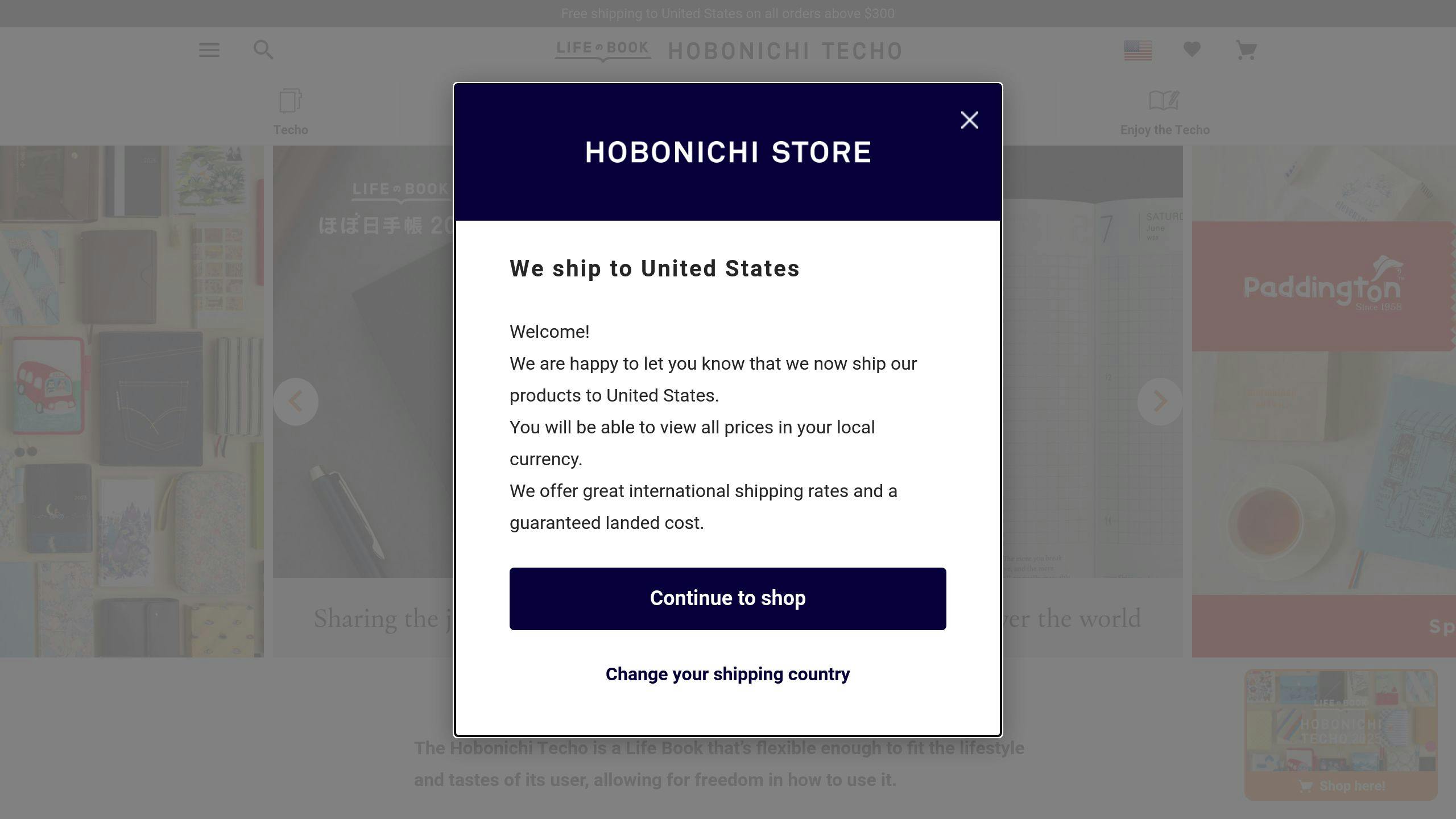
Tomoe River paper is known for being thin and smooth, which enhances the writing experience. However, its slower ink-drying time means smudge-resistant pens are a must [2][4].
Gel pens are a great choice for daily use. They combine smooth writing with quick-drying ink, which helps prevent smudging on Tomoe River paper [1][3].
Fountain pens can be used on Tomoe River paper, but it’s important to select quick-drying inks and handle them carefully to avoid smudging [2][4].
To minimize smudging:
These simple steps can help keep your journaling pages clean and smudge-free [3].
Stickers Made for Planning
Our custom stickers are a fuss-free way to brighten up your planner pages with perfectly-sized designs that add a spark of personality to every layout.
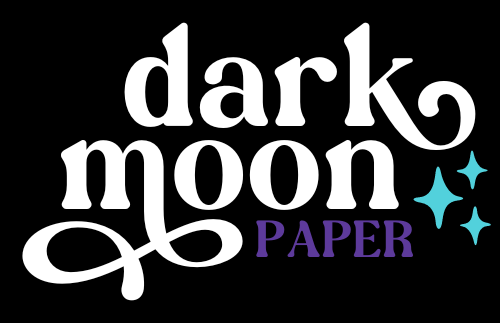
Why use planner stickers?
Planner stickers make organizing easy, fun, and personal! Add color, creativity, and structure to every page, transforming your planner into a tool that reflects you. Perfect for tracking, decorating, and staying inspired daily!
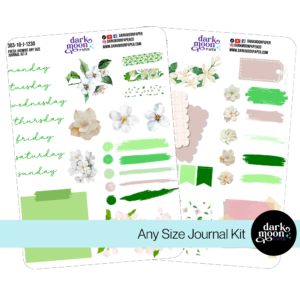
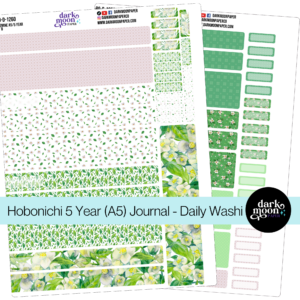
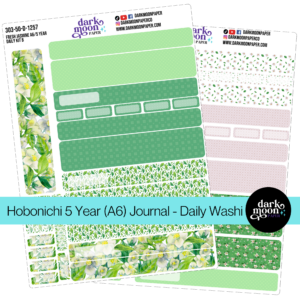
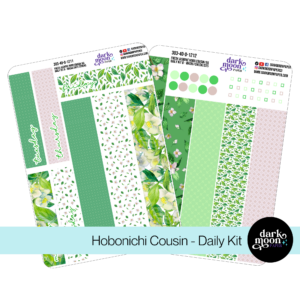
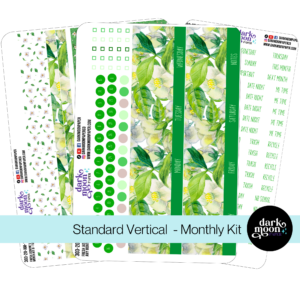
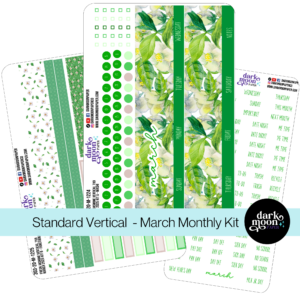
Hello and welcome!
I’m Rachael Snow, a lifelong artist and entrepreneur, and I started Dark Moon Paper to blend my love of art, technology, and the mysterious beauty of the world around us. My sticker kits are meant to set the mood, tell a story, and give you a little escape from the ordinary.
I work from my cozy studio tucked away in the beautiful woods of Oregon, surrounded by nature and a dark night sky full of stars.